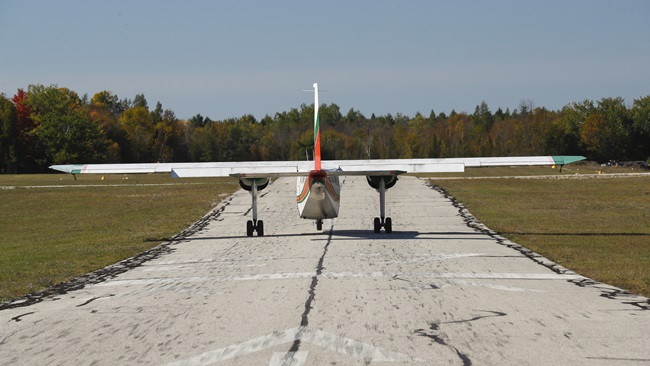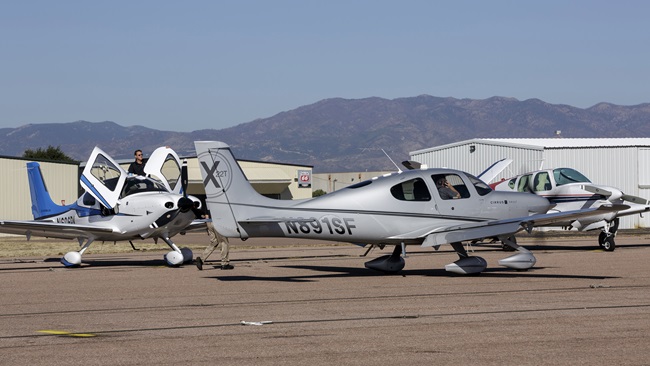Historic week brings barrage of GA legislation
AOPA says privatization not a solution
Two competing FAA reauthorization bills introduced June 21 and 22 paint very different possible futures for aviation in the United States. One promises to protect general aviation. The other leads the nation down a pathway that has been disastrous for GA in other countries.
The House of Representatives introduced a landmark FAA reauthorization bill that proposes privatizing air traffic control. Less than 24 hours later, the Senate dropped its own reauthorization bill that does not include privatization, but does include a number of provisions favorable to general aviation—a bill that has the full support of AOPA.
The privatization idea is supported by President Trump; he announced it as a key part of his infrastructure improvement program. The House bill would spin off air traffic control into a nonprofit non-governmental entity that would charge user fees to the airlines. The bill proposes that GA and business aviation would continue to pay federal excise taxes on fuel. Governance of the corporation would come from a 13-member board of directors, of which GA and business aviation would each get one seat. The commercial and regional airlines also would each get one seat.
“We appreciate Chairman Shuster’s efforts to accommodate the needs of general aviation. However, we are focused on reforms to our air traffic system that will work for all users of the system. A privatization proposal that requires protections for a large segment of aviation has a high potential for unintended consequences, as well as increased costs and uncertainty. We will continue to work with the Administration, Congress, and industry stakeholders on reforms and efficiencies, short of privatization, necessary to make certain our air traffic control system remains the envy of the world.” said AOPA President and CEO Mark Baker. “Around the world where privatization of ATC has occurred, general aviation does not thrive. In my discussions with AOPA members around the country, there is no support for privatization. In addition, privatization does not solve the primary issues facing aviation in the United States.”
“While the air traffic system works well, let’s be clear that the status quo at the FAA is not a solution either. There are many efficiencies to be gained in the agency,” Baker said. “With leadership in Congress and the Administration, we can address those shortcomings to ensure modernization and efficiencies are achieved for all users of the system.”
A lack of predictable funding for the agency is often touted as a reason for modernization delays. AOPA, along with other GA groups, in a joint statement last week, committed to addressing needed reforms, including biennial budgeting, consolidating unneeded and outdated facilities, procurement and certification reforms, and putting to use some of the balance from the Airport and Airway Trust Fund to expedite technology deployment.
Privatization proponents often cite the need for faster technology investment. However, none of the technologies in the pipeline will lead to any significant increases in air traffic capacity, which is the biggest problem with the system. According to The New York Times, some 50 percent of all delays originate at the three New York City airports. And half of all late flights are a result of circumstances the airlines control themselves, such as aircraft maintenance, crew scheduling, and refueling, according to the U.S. Bureau of Transportation Statistics. Another 30 percent of delays are weather-related. Only 15 percent are related to air traffic issues, but most of those result from heavy airline traffic volume.
The only way to significantly improve that situation is for the airlines to change their scheduling policies and to build more runways. However, simply privatizing the air traffic system will not speed up the construction and permitting processes for building new runways. In fact, for example, it took four years to construct a new runway at Seattle-Tacoma International Airport, but it took 15 years to get the permits. Todd Hauptli of the American Association of Airport Executives bitterly joked before a congressional panel last year, “It took longer to build that runway than the Great Pyramids of Egypt.”
"Rather than spending tens of billions of dollars to transition the U.S. ATC system to a non-profit, let’s spend some of that to help the FAA become more efficient, removing onerous certification regulations, and focusing dollars where they create tangible benefits,” Baker said.
The Senate reauthorization bill (S. 1405), meanwhile, includes provisions for supporting GA airports. The legislation, introduced by Commerce Committee Chairman John Thune (R-S.D.), contains language from the FLIGHT Act, introduced as a standalone bill in the House and Senate in mid-June. The bill calls for investments in GA airports, hangars, and tarmacs and provides local communities more flexibility to roll over federal grants in order to fund larger, more meaningful airport improvement projects.
Thune’s bill also includes provisions from the Pilot’s Bill of Rights 2 previously introduced by Sen. James Inhofe (R-Okla.) to provide pilots with greater legal protection when dealing with FAA enforcement.
The Senate legislation would fund the FAA through September 2021, providing the sort of long-term funding guarantees the agency needs to better plan ATC modernization projects.
The House bill is scheduled to be marked up—a committee process whereby potential amendments are considered—on June 27 and the Senate proposal on June 29. The bills will then be voted on by these respective committees. After passage in the committees, the bills will need to be passed by the full House and the full Senate and differences worked out before a bill can be sent to the President.
“This process has a long way to go. There is not consensus within the aviation industry or in Congress on how our ATC system should be reformed,” said Jim Coon, AOPA Senior Vice President of Government Affairs and Advocacy. “Any reforms need to work for all users of the system, particularly those who live in rural communities not just urban areas,” Coon added.
The current FAA authorization extension expires September 30. If an agreement cannot be reached by then, which is anticipated, Congress will need to pass a short-term extension to keep the agency funded.




